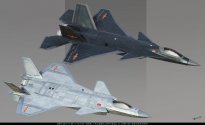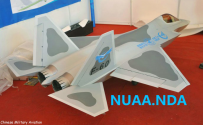Well, if the decision for the carrier-based operation has been clean-cut since the very beginning, why J-35 progress is so slow or rather started so late?
And the funding for FC-31 is from SAC not PLAN and it's a export project from the get go?
A lots of contradiction facts here.
By the "decision has been clean-cut" phrase, I am referring to the PLAN's decision to induct J-35 as China's carrier-based 5th-gen fighter instead of the J-20 after viewing competing proposals from both Shenyang and Chengdu. Which means, there should exist no more arguments from the so-called "Chinese experts" that somehow the PLAN made the wrong decision and should've gone with the J-20 as China's carrier-based 5th-gen fighter instead.
When was that decision made? I have no solid idea, but most likely sometime in the mid-2010s, if not the late-2010s.
To put it simply:
The FC-31 actually originated from the failed proposal from Shenyang for the PLAAF's 5th-gen fighter competition sometime in the 2000s, of which Shenyang obviously lost to Chengdu (Shenyang's proposal is essentially a stealth-up Flanker, lol). The FC-31 was indeed self-funded by Shenyang as a medium-weight 5th-gen fighter meant to be offered for overseas customers (primary) and the PLAAF (secondary) following that competition. The FC-31 eventually went through several iterations and refinements in design and engineering, before it was selected by the PLAN for carrier use as the J-35.
I don't think there are any contradictions with what pop3 has explained.
Last edited:


